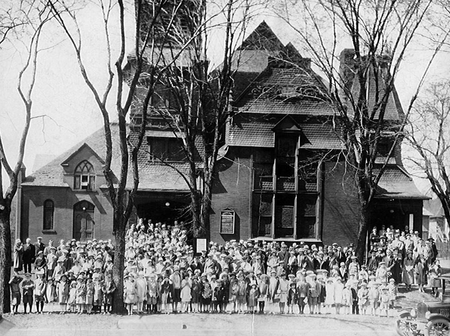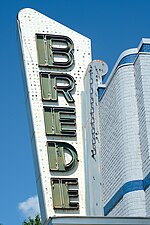Como Congregational Church

The Como Congregational Church is a historic church building in the Como neighborhood of Minneapolis, Minnesota. Opened in 1887 and designed by architect Charles Sumner Sedgwick, a Minneapolis master architect, the church is an example of eclectic Queen Anne style architecture. During its first four decades, the church building is strongly associated with two major Minneapolis and Minnesota historic figures: Maria Sanford, a noted social reformer, speaker and public affairs activist James Elwell, the civic leader, and the public financier associated with the Minneapolis Park System.Como Congregational was Sanford's place of worship (and adjacent to her home), who as a church leader spoke at its pulpit and community meetings with her advocacy of civic reform and Progressive causes.[Note 1] Construction of the building was primarily funded by Elwell, who had founded the surrounding Como neighborhood in 1882, with the intention that the building serve both as an open place of worship and as a community center. Elwell was subsequently active in Como neighborhood and wider social concerns through the church and through the Como Improvement Association (founded by Elwell, based at the Congregational) for the next decades. The building was determined as a Minneapolis historic resource in March 2020.
Excerpt from the Wikipedia article Como Congregational Church (License: CC BY-SA 3.0, Authors, Images).Como Congregational Church
Southeast 14th Avenue, Minneapolis
Geographical coordinates (GPS) Address Nearby Places Show on map
Geographical coordinates (GPS)
| Latitude | Longitude |
|---|---|
| N 44.989027777778 ° | E -93.232361111111 ° |
Address
Southeast 14th Avenue 1035,1037
55414 Minneapolis
Minnesota, United States
Open on Google Maps










